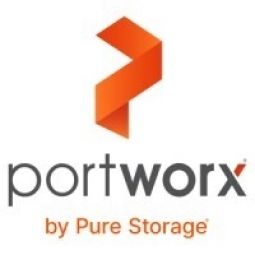技术
- 基础设施即服务 (IaaS) - 云中间件与微服务
- 平台即服务 (PaaS) - 应用开发平台
适用行业
- 电子商务
- 零售
适用功能
- 采购
- 产品研发
用例
- 施工管理
- 基础设施检查
服务
- 云规划/设计/实施服务
- 系统集成
关于客户
Pyvotal Solutions 是一家专业咨询和云服务公司,在 IT 领域拥有超过 25 年的经验,为高流量、世界一流的网站提供支持。该公司专注于拉丁美洲市场,成立于四年多前,旨在满足该地区公司采用云和其他现代 IT 实践以变得更加敏捷、有效和高效的需求。 Pyvotal 解决方案通过构建必要的基础设施和系统来帮助想要扩展到其他地区和市场的公司。虽然他们的主要重点是基础设施和平台服务,但他们还与应用程序开发专家合作,为客户提供完整的解决方案。他们的客户包括 60 多家正在扩大市场范围的电子商务客户,其中包括通信、移动和航空公司等公司。
挑战
Pyvotal Solutions 是一家基于云的基础设施和平台服务公司,面临着为注重成本但要求严格的客户构建平台解决方案的挑战。该公司需要使用更少的资源提供可靠的高性能平台。他们的大多数客户需要为其应用程序(例如电子商务网站)提供完整的托管解决方案,但不想管理基础架构或 CMS。此外,他们需要一个灵活且经济高效的解决方案。传统虚拟机效率不高,因为它们需要每个应用程序专用的资源,导致一天中的某些时间资源利用不足。此外,该公司在容器上运行有状态服务方面面临挑战,特别是在管理持久存储方面。
解决方案
为了应对这些挑战,Pyvotal Solutions 转向了容器。容器使公司能够通过在服务器上运行许多容器来更好地利用底层基础设施,从而为客户解决方案提供更细粒度和更易于管理的环境。这种方法使他们在资源配置方面更接近需求曲线。为了管理容器,他们使用了 Rancher。对于持久存储,他们探索了不同的解决方案,包括亚马逊的EFS(弹性文件系统)和Portworx。他们选择 Portworx,因为它易于部署、管理、通过 Docker Compose 集成,并与 Rancher 集成。 Portworx 还提供基于云的快照,可以存储在 S3 等低成本对象存储环境中以进行灾难恢复。该解决方案使他们的容器即服务产品变得可行、可靠且具有成本效益。
运营影响
数量效益

Case Study missing?
Start adding your own!
Register with your work email and create a new case study profile for your business.
相关案例.

Case Study
Improving Production Line Efficiency with Ethernet Micro RTU Controller
Moxa was asked to provide a connectivity solution for one of the world's leading cosmetics companies. This multinational corporation, with retail presence in 130 countries, 23 global braches, and over 66,000 employees, sought to improve the efficiency of their production process by migrating from manual monitoring to an automatic productivity monitoring system. The production line was being monitored by ABB Real-TPI, a factory information system that offers data collection and analysis to improve plant efficiency. Due to software limitations, the customer needed an OPC server and a corresponding I/O solution to collect data from additional sensor devices for the Real-TPI system. The goal is to enable the factory information system to more thoroughly collect data from every corner of the production line. This will improve its ability to measure Overall Equipment Effectiveness (OEE) and translate into increased production efficiencies. System Requirements • Instant status updates while still consuming minimal bandwidth to relieve strain on limited factory networks • Interoperable with ABB Real-TPI • Small form factor appropriate for deployment where space is scarce • Remote software management and configuration to simplify operations

Case Study
Digital Retail Security Solutions
Sennco wanted to help its retail customers increase sales and profits by developing an innovative alarm system as opposed to conventional connected alarms that are permanently tethered to display products. These traditional security systems were cumbersome and intrusive to the customer shopping experience. Additionally, they provided no useful data or analytics.

Case Study
How Sirqul’s IoT Platform is Crafting Carrefour’s New In-Store Experiences
Carrefour Taiwan’s goal is to be completely digital by end of 2018. Out-dated manual methods for analysis and assumptions limited Carrefour’s ability to change the customer experience and were void of real-time decision-making capabilities. Rather than relying solely on sales data, assumptions, and disparate systems, Carrefour Taiwan’s CEO led an initiative to find a connected IoT solution that could give the team the ability to make real-time changes and more informed decisions. Prior to implementing, Carrefour struggled to address their conversion rates and did not have the proper insights into the customer decision-making process nor how to make an immediate impact without losing customer confidence.

Case Study
Ensures Cold Milk in Your Supermarket
As of 2014, AK-Centralen has over 1,500 Danish supermarkets equipped, and utilizes 16 operators, and is open 24 hours a day, 365 days a year. AK-Centralen needed the ability to monitor the cooling alarms from around the country, 24 hours a day, 365 days a year. Each and every time the door to a milk cooler or a freezer does not close properly, an alarm goes off on a computer screen in a control building in southwestern Odense. This type of alarm will go off approximately 140,000 times per year, equating to roughly 400 alarms in a 24-hour period. Should an alarm go off, then there is only a limited amount of time to act before dairy products or frozen pizza must be disposed of, and this type of waste can quickly start to cost a supermarket a great deal of money.

Case Study
Supermarket Energy Savings
The client had previously deployed a one-meter-per-store monitoring program. Given the manner in which energy consumption changes with external temperature, hour of the day, day of week and month of year, a single meter solution lacked the ability to detect the difference between a true problem and a changing store environment. Most importantly, a single meter solution could never identify root cause of energy consumption changes. This approach never reduced the number of truck-rolls or man-hours required to find and resolve issues.








